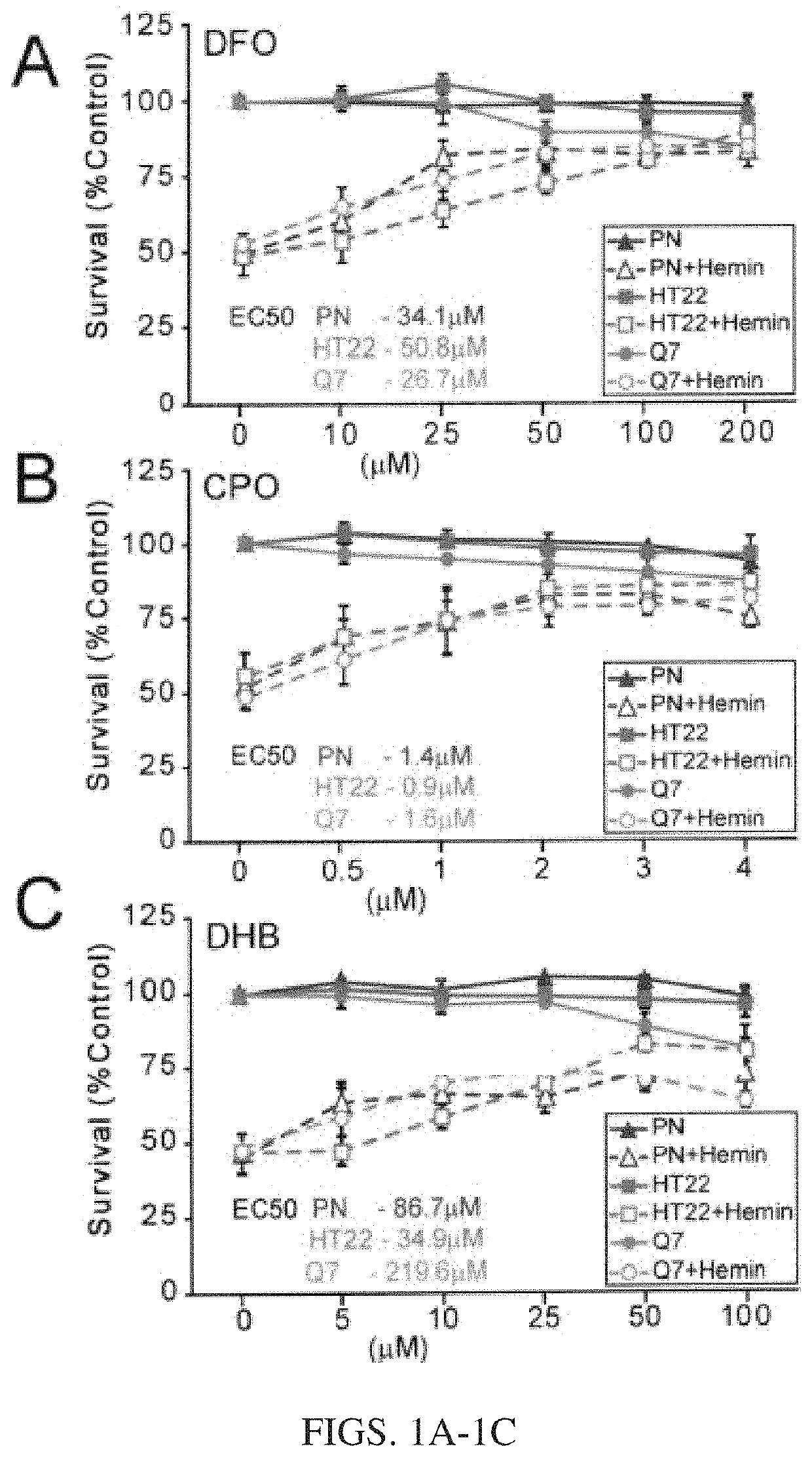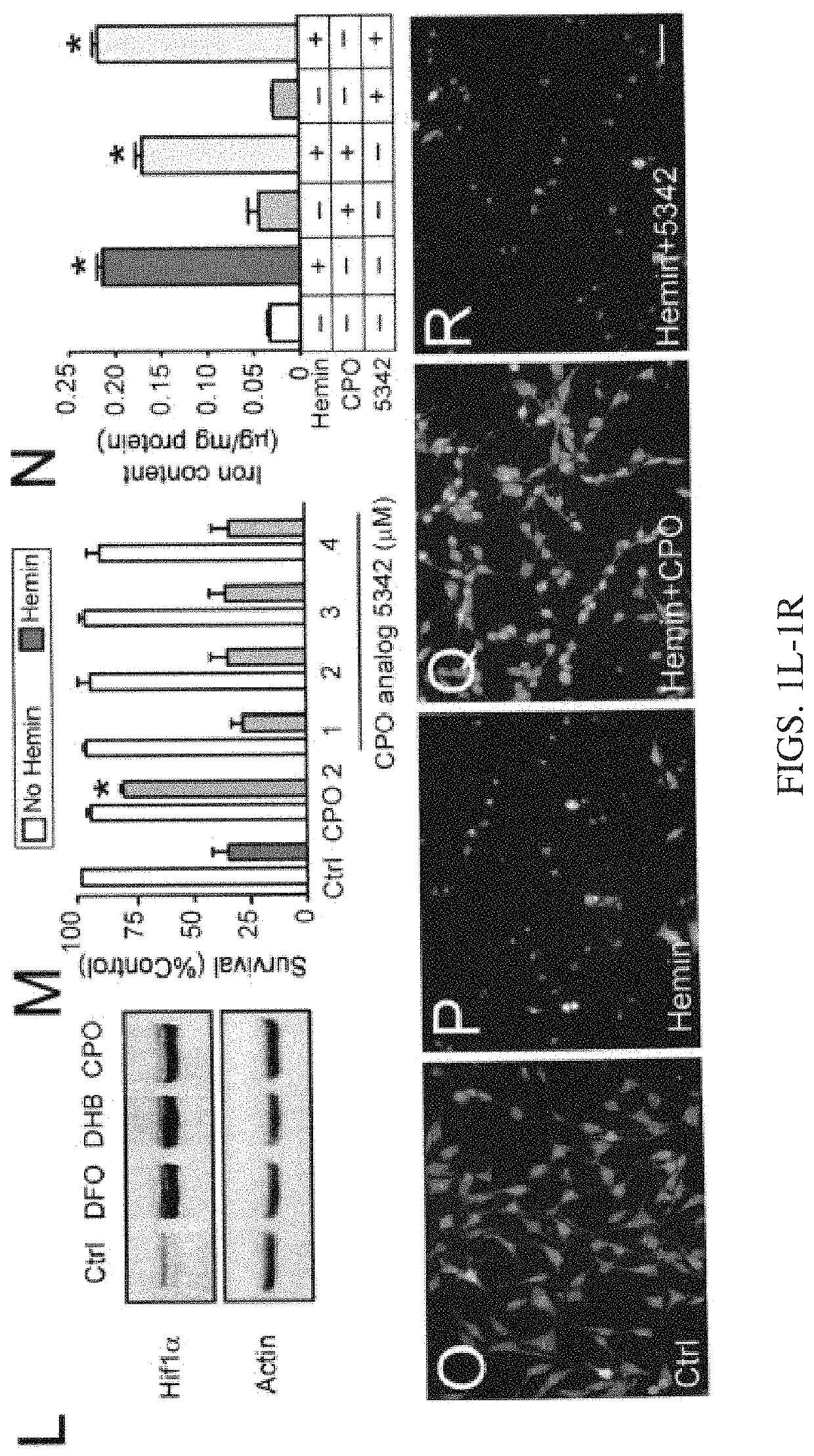Prolylhydroxylase/ATF4 inhibitors and methods of use for treating neural cell injury or death and conditions resulting therefrom
- Summary
- Abstract
- Description
- Claims
- Application Information
AI Technical Summary
Benefits of technology
Problems solved by technology
Method used
Image
Examples
examples
[0112]Secondary injury from ICH has been attributed to hemin, a breakdown product of hemoglobin (from lysed red blood cells). To investigate the mechanisms of hemin toxicity to neurons in vitro, this experiment exposed primary cortical neurons, immortalized hippocampal neuroblasts (HT22 cells), and immortalized striatal neuroblasts (Q7 cells) to hemin for 24 hours. As expected, a dose dependent loss in viability as measured by MTT reduction or LIVE / DEAD assay in all three cell types was observed. Hemin treatment of primary neurons at the LD50 (50 μM) resulted in a time-dependent increase in heme-oxygenase expression and iron content suggesting that hemin is taken up into neurons and metabolized. To examine whether iron-dependent HIF PHD enzymes can be modulated to protect neurons from hemin-induced toxicity, this experiment examined structurally diverse inhibitors of the HIF PHDs: desferoxamine, cyclopirox, and dihydroxybenzoic acid. Co-treatment of neurons with hemin with structura...
PUM
| Property | Measurement | Unit |
|---|---|---|
| Structure | aaaaa | aaaaa |
Abstract
Description
Claims
Application Information
 Login to View More
Login to View More - R&D
- Intellectual Property
- Life Sciences
- Materials
- Tech Scout
- Unparalleled Data Quality
- Higher Quality Content
- 60% Fewer Hallucinations
Browse by: Latest US Patents, China's latest patents, Technical Efficacy Thesaurus, Application Domain, Technology Topic, Popular Technical Reports.
© 2025 PatSnap. All rights reserved.Legal|Privacy policy|Modern Slavery Act Transparency Statement|Sitemap|About US| Contact US: help@patsnap.com



